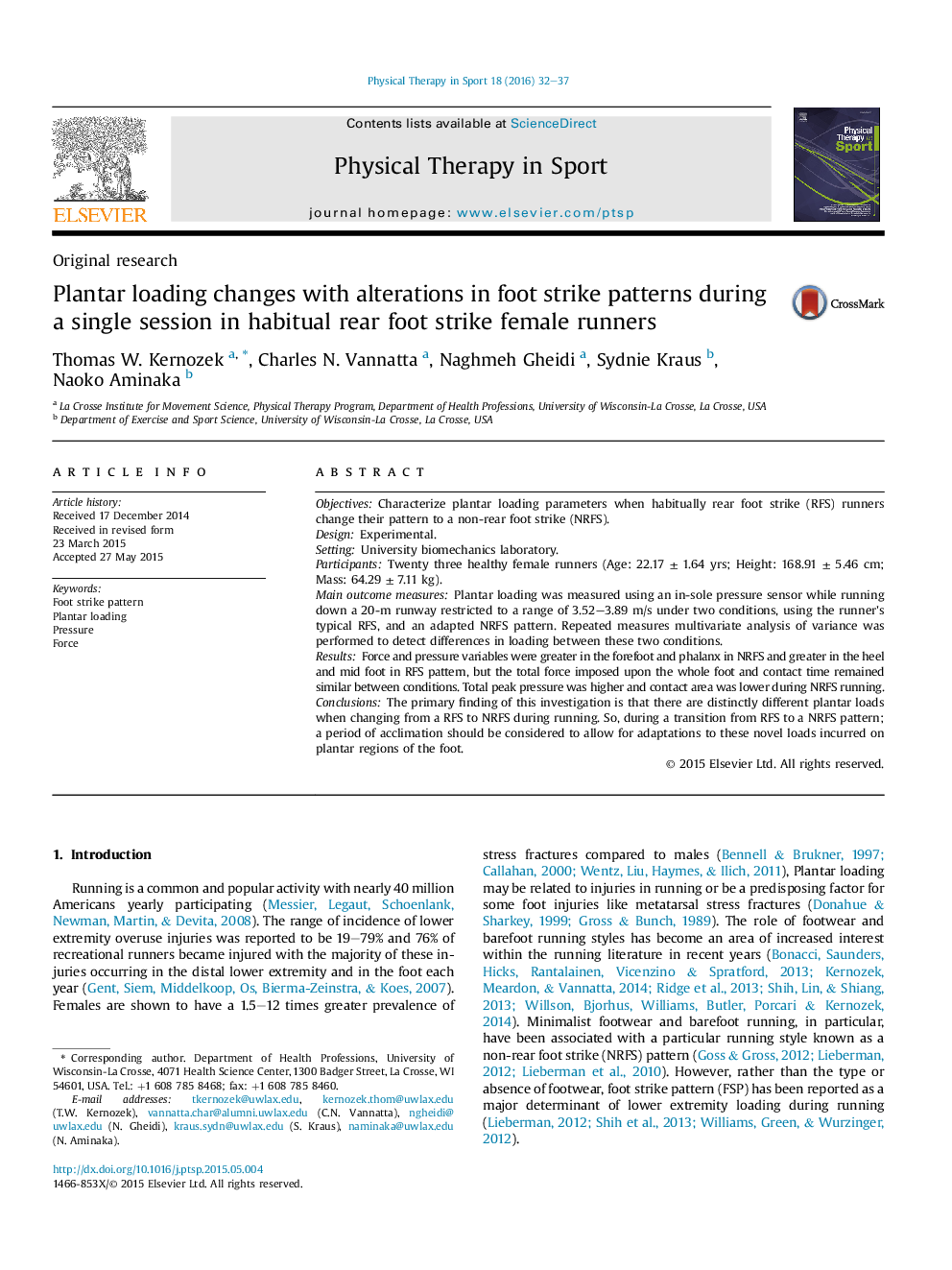| Article ID | Journal | Published Year | Pages | File Type |
|---|---|---|---|---|
| 2703541 | Physical Therapy in Sport | 2016 | 6 Pages |
•Peak force and contact time remained the same with both FS patterns.•Peak force was higher in the heel and mid foot regions during RFS running.•Peak Pressure was higher on the total foot, forefoot and phalanx during NRFS running.•Runners can convert their RFS loading pattern to an NRFS during one session.
ObjectivesCharacterize plantar loading parameters when habitually rear foot strike (RFS) runners change their pattern to a non-rear foot strike (NRFS).DesignExperimental.SettingUniversity biomechanics laboratory.ParticipantsTwenty three healthy female runners (Age: 22.17 ± 1.64 yrs; Height: 168.91 ± 5.46 cm; Mass: 64.29 ± 7.11 kg).Main outcome measuresPlantar loading was measured using an in-sole pressure sensor while running down a 20-m runway restricted to a range of 3.52–3.89 m/s under two conditions, using the runner's typical RFS, and an adapted NRFS pattern. Repeated measures multivariate analysis of variance was performed to detect differences in loading between these two conditions.ResultsForce and pressure variables were greater in the forefoot and phalanx in NRFS and greater in the heel and mid foot in RFS pattern, but the total force imposed upon the whole foot and contact time remained similar between conditions. Total peak pressure was higher and contact area was lower during NRFS running.ConclusionsThe primary finding of this investigation is that there are distinctly different plantar loads when changing from a RFS to NRFS during running. So, during a transition from RFS to a NRFS pattern; a period of acclimation should be considered to allow for adaptations to these novel loads incurred on plantar regions of the foot.
